
Beryl Stone Buyer’s Guide — Nkyerɛaseɛ, Agyapadeɛ, Abakɔsɛm, Mfasoɔ, & Nea ɛkeka ho!
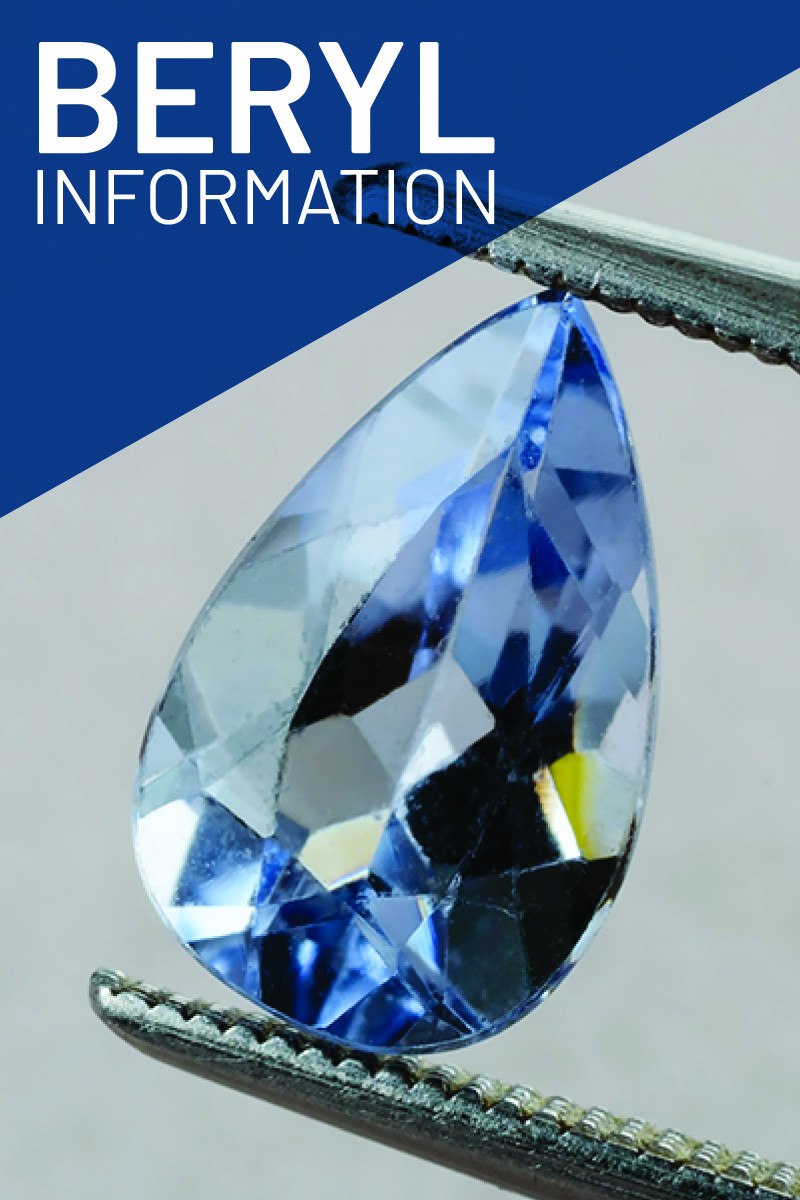 Dɛn na emerald, aquamarines, ne morganite yɛ pɛ? Wɔn nyinaa yɛ beryl abo ahorow a ɛyɛ nwonwa!
Dɛn na emerald, aquamarines, ne morganite yɛ pɛ? Wɔn nyinaa yɛ beryl abo ahorow a ɛyɛ nwonwa!
Beryl yɛ aboɔden abo a ɛyɛ fɛ a ɛyɛ nwonwa na egu ahorow. Esiane sɛ beryl wɔ ahorow pii, a emerald a agye din ne heliodor a ɛyɛ anuonyam ka ho nti, ayɛ aboɔden abo a wɔde di dwuma no kɛse mfe mpempem pii.
Sɛ́ ebia worehwehwɛ ahwehwɛ a ɛsa yare, nneɛma a wɔde dwennwen nneɛma ho, anaa agude bi a ɛyɛ nwonwa no, hwɛ hu sɛ wobɛkɔ so ahwɛ beryl. Esiane sɛ beryl ahorow pii a wubetumi apaw bi nti, yɛwɔ awerɛhyem sɛ beryl abohene a ɛyɛ pɛ no wɔ hɔ ma wo.
Ɛno akyi no, wɔ akwankyerɛ a ɛkɔ akyiri yi mu no, yɛbɛkɔ beryl no nkyerɛkyerɛmu ne nneɛma a ɛma aboɔden abo yi fata sɛ wode w’adwene si so no mu.
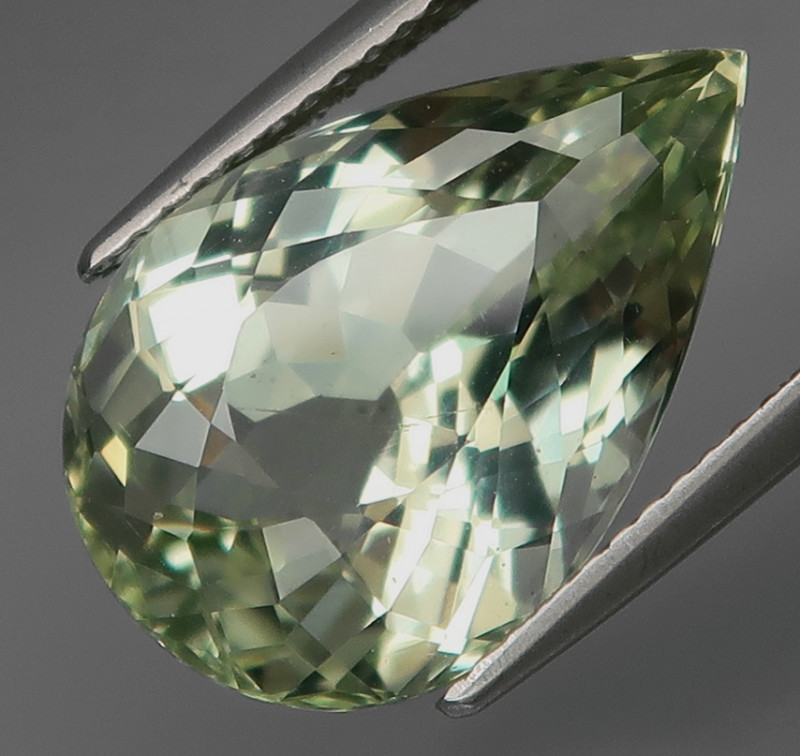
Dɛn ne Beryl Ɔbo?
Beryl abo yɛ aboɔden abo a wɔde beryllium, aluminium, silicon, ne oxygen ayɛ. Saa aboɔden abo a ɛyɛ nwonwa yi wɔ kɔla ahorow pii, enti momma yɛnhwɛ emu biara so.
Gosenfo

Gosenite yɛ beryl a ɛho tew a enni kɔla. Nea eye ne sɛ, saa abo yi dɔɔso na ne bo nyɛ den. Sɛ worehwehwɛ sɛ wobɛkyekye beryl ahoboa a edi mũ a, goshenite yɛ abohene a eye kyɛn so a wode fi ase.
Emerald a wɔfrɛ no Emerald
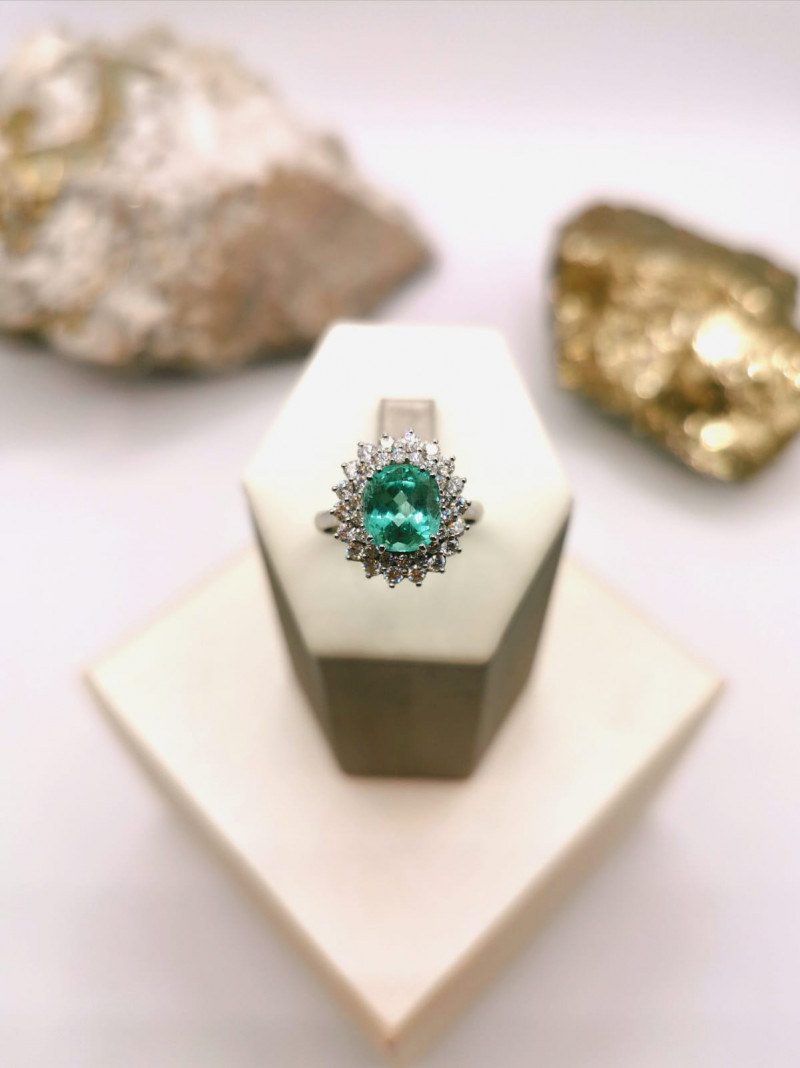
So beryl ne emerald yɛ ade koro? Wiɛ, na... elegant emerald yɛ beryl ahorow ahorow ankasa!
Saa aboɔden abo a ɛyɛ ahabammono a ɛyɛ fɛ yi yɛ aboɔden abo a wɔdɔ no sen biara wɔ wiase no mu biako. Emerald yɛ nea adehye ne nnipa a wɔagye din ani gye ho titiriw. Nokwasɛm a ɛyɛ anigye: wɔ 1953 mu no, kan Awuraa Panyin Jacqueline Kennedy hyɛɛ ayeforohyia mpɛtea a ne bo yɛ dɔla ɔpepem biako a wɔde emerald ne diamond ayɛ !
Sɛ w’awoda du May mu a, emerald yɛ w’awoda bo a wɔfrɛ no beryl .
Nsu mu nsu mu aduru

Beryl ahorow foforo a wonim no yiye ne aquamarine, aboɔden abo a ɛyɛ bruu anaa cyan a ɛhyerɛn te sɛ ɛpo. Saa aboɔden abo bruu yi yɛ March awo abo abien no mu biako na ɛyɛ ayeforohyia afe a ɛto so 19 akyɛde ahorow a ɛyɛ nwonwa.
Morganite na ɔkyerɛwee
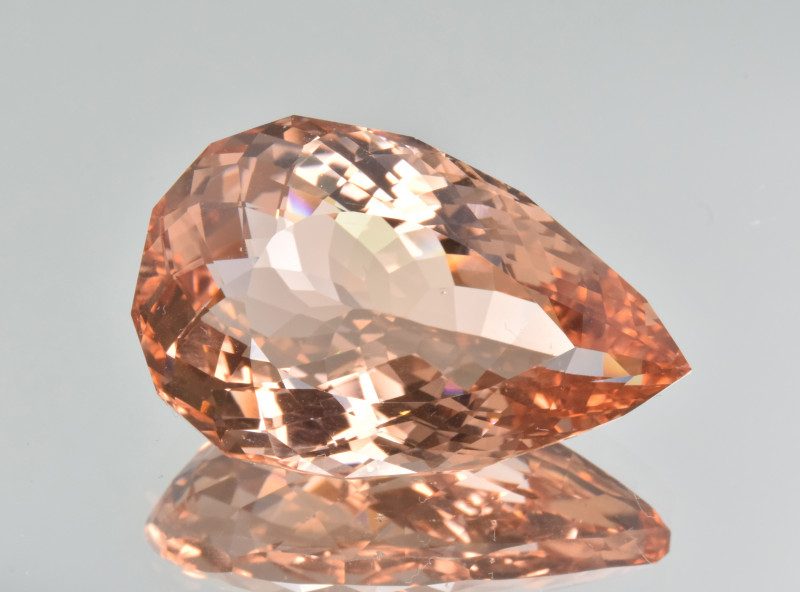
Morganites yɛ beryl a ɛyɛ pink a ɛyɛ bubbly kosi peachy-pink. Bere a ɛnyɛ nea nkurɔfo ani gye ho te sɛ emerald anaa aquamarines no, akyinnye biara nni ho sɛ saa aboɔden abo a ɛyɛ pink yi bɛtwetwe w’adwene wɔ wɔn ahoɔfɛ a ɛyɛ mmerɛw no ho. Wɔagye din nso sɛ daimond a wɔde besi ayeforohyia nkaa ananmu!
Heliodor na ɔkyerɛwee
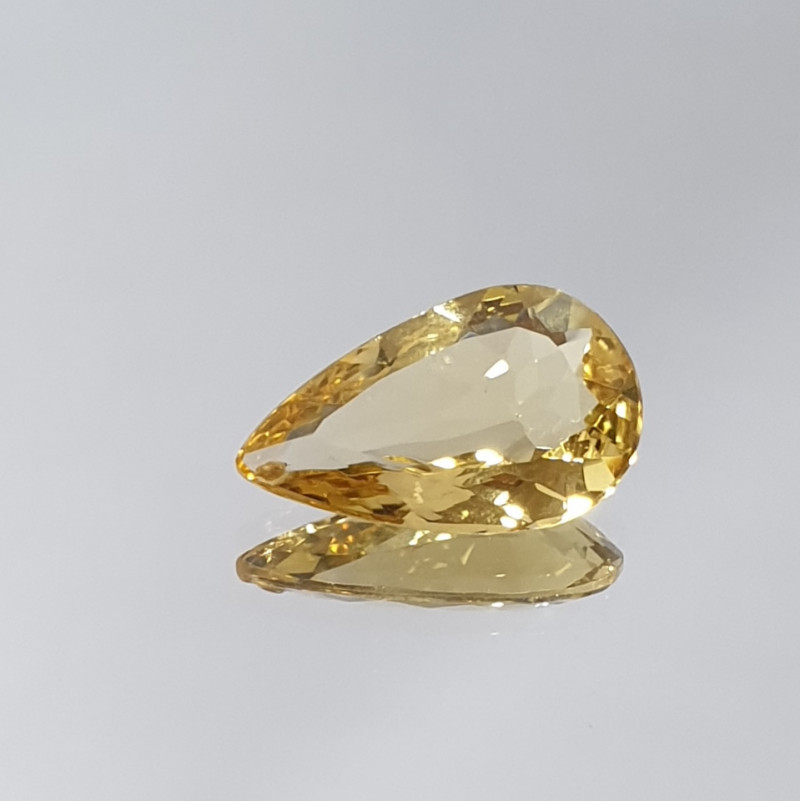
Heliodor yɛ beryl a ɛyɛ kɔkɔɔ a ɛhyerɛn. Heliodor kyerɛ “akyɛde a efi owia hɔ” wɔ Hela kasa mu. Te sɛ nea wɔde ne din too so no, saa aboɔden abo a ɛyɛ sika kɔkɔɔ yi kyere owia hann. Heliodor abo taa yɛ nea wonya fi hɔ na ɛnyɛ nea ɛho ka sua, na ɛma ɛyɛ agude a eye kyɛn so a wobetumi apaw.
Beryl Kɔkɔɔ (Bixbite) .
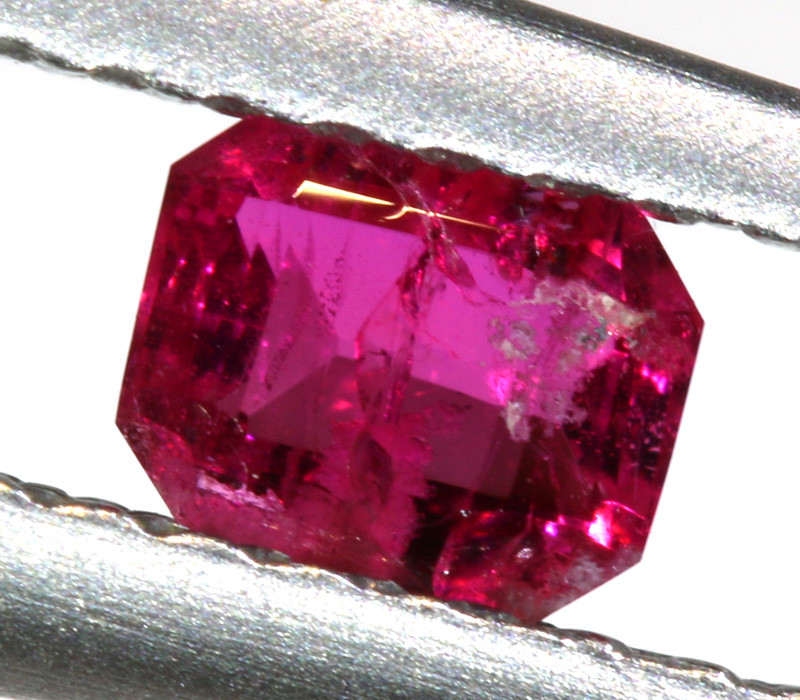
Awiei koraa no, beryl ahorow a wɔntaa nhu ne beryl kɔkɔɔ (bixbite). Sɛnea Utah Geological Survey kyerɛ no, beryl kɔkɔɔ biako pɛ na ɛwɔ abohene a ɛyɛ aboɔden abo 150,000 biara mu! Ne saa nti, aboɔden abo kɔkɔɔ a ɛyɛ nwonwa yi de nneɛma bo a ɛyɛ fɛ ba.
Enti, yɛaka beryl ahorow no ho asɛm, afei momma yɛnhwɛ ɔbo no asase ho nneɛma.
Beryl Nkyerɛkyerɛmu ne Ne Su
Beryl yɛ nnuru a wɔfrɛ no beryllium aluminium silicate. Aboɔden abo a ɛtra hɔ kyɛ no di 7.5-8 wɔ Mohs nsenia a ɛkyerɛ sɛ mineral hardness , wɔ safir ne diamond ase pɛɛ.
Kɔla : Green, bruu, kɔkɔɔ, kɔkɔɔ, pink, kɔla biara nni mu
Crystal nhyehyɛe : Ɛyɛ ahinanan
Luster : Ɛyɛ vitreous kosi resinous
Transparency : Ɛyɛ nea ɛda adi pefee kosi nea ɛnyɛ nea ɛda adi pefee
Nneɛma a ɛma nneɛma yɛ mmerɛw : 1.566-1.602
Nnipa dodow : 2.76
Cleavage : Ɛnyɛ nea ɛda adi pefee
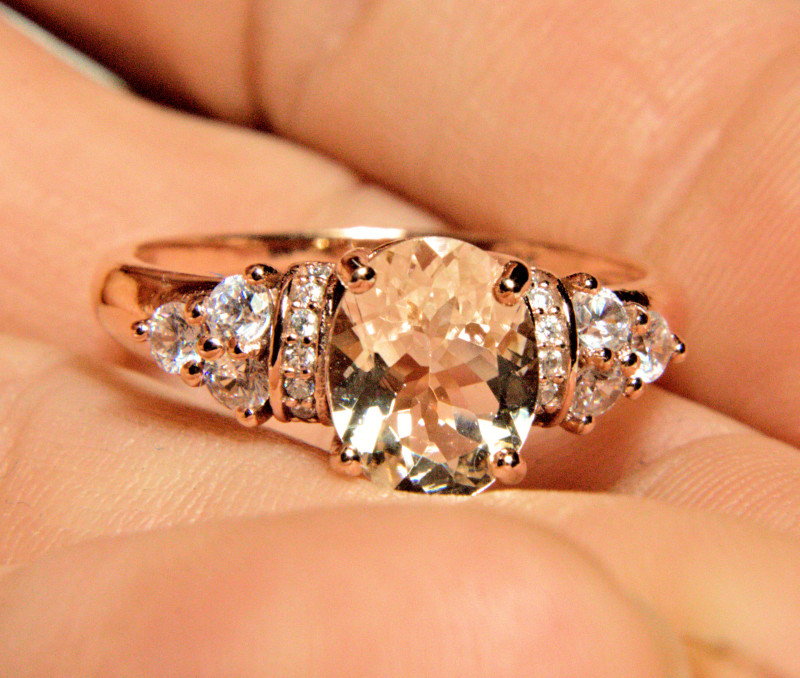
Beryl Abo Nkyerɛase
Ɛmfa ho nea w’ani agye so no, beryl abo nyinaa wɔ ntease a tumi wom. Momma yɛnkɔ beryl nkyerɛase biara so ntɛm.
Emerald yɛ anidaso ne kommyɛ kanea. Saa aboɔden abo a ɛyɛ ahabammono a ɛhyerɛn yi betumi aboa ma nsusuwii biara a ɛhaw adwene no adwo.
Aquamarines yɛ akokoduru ne ahobammɔ ho sɛnkyerɛnne; aboɔden abo a ɛyɛ po mu ahabammono no betumi aboa wo ma woanya adwene a tumi wom na woadi akwanside biara so.
Sɛ yɛreka adwene a tumi wom ho asɛm a, heliodor abo betumi ama ahotoso ne ɔpɛ ayɛ kɛse.
Sɛ worehwehwɛ sɛ wubenya adebɔ ho nimdeɛ a, susuw ho sɛ wobɛdan akɔ beryl abo kɔkɔɔ so. Saa aboɔden abo a ɛsom bo yi betumi aboa wo ma woadi yiye wɔ adwinni mu.
Sɛ wohyia ntawntawdi wɔ mo abusuabɔ mu a, morganites betumi akyerɛ wo kwan akɔ ayamhyehye, tema, ne boasetɔ mu.
Gosenfo aboɔden abo betumi aboa wo ma woanantew nokware kwan so na woabɛyɛ nhwɛso a edi kan ama afoforo a wobedi akyi.
So beryl ntease no twam kɔ honhom fam ne nneɛma nyinaa mu? Wobɛtow kyakya!
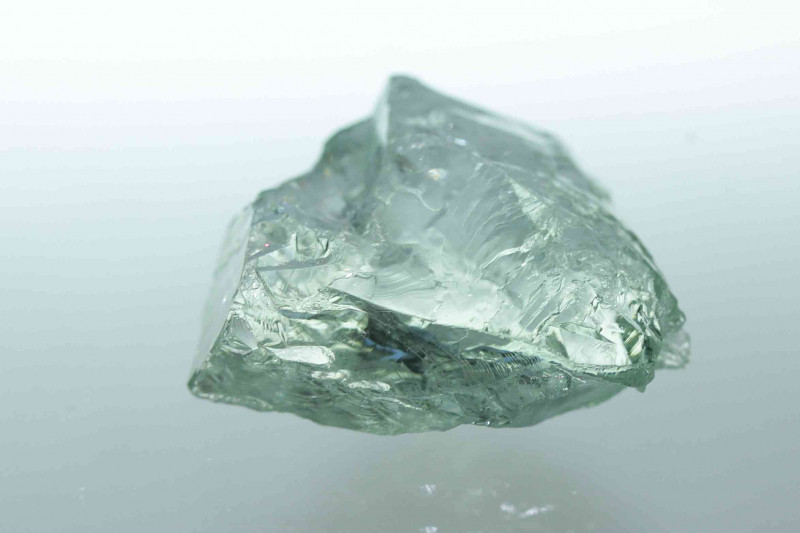
Beryl Honhom ne Ayaresa Nneɛma
Beryl abo wɔ tumi a ɛma chakra pɔtee bi yɛ adwuma. Saa ahoɔden kronkron mmeae yi wɔ wo nipadua nyinaa mu na ɛkanyan honam ne honhom mu ayaresa.
Emerald, morganites, aquamarines, ne red beryls yɛ abo a ɛsa yare a ɛma koma no chakra kari pɛ. Saa chakra yi wɔ koko mu na ɛma ɔdɔ, ayamhyehye, ne tema nya nkɔso. Sɛ wopɛ sɛ wubue wo koma chakra a, fa saa aboɔden abo yi mu biara to wo moma so kɛkɛ na siesie wo ho ma ɔdɔ!
So beryl ye ma agude? Na aboɔden abo no kɛse ne ne mu duru nso ɛ? Afei, yɛbɛhwɛ beryl ɔbo no ahoɔden a ɛte sɛ aboɔden abo no.
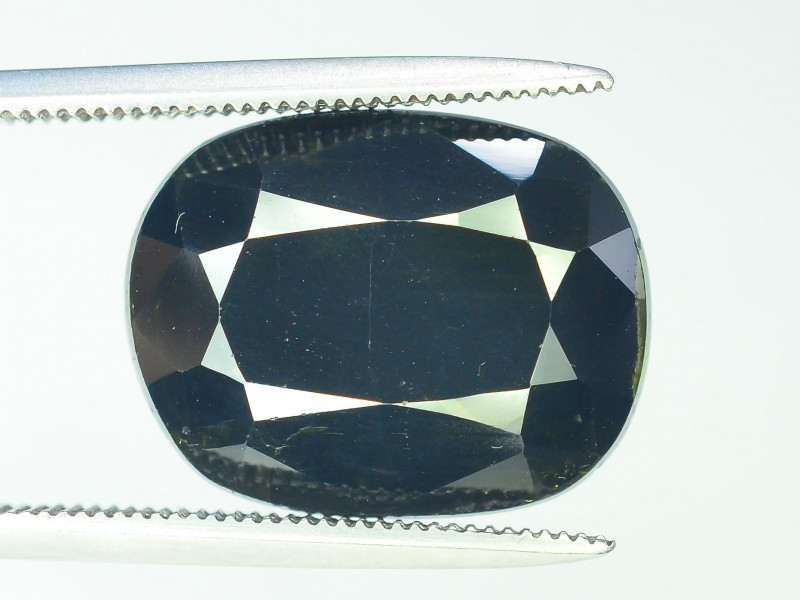
Beryl Aboɔden Aboɔ Nneɛma a Ɛwɔ Hɔ
Sɛ ɛba sɛ wobɛtɔ aboɔden abo a, ɛho hia sɛ wohwehwɛ nneɛma a ɛwɔ hɔ ankasa mu. Wobɛyɛ dɛn ahu sɛ saa goshenite a wɔatwa no emerald no ye ma asomuade? Wiɛ, sɛ wunim beryl ɔbo no C anan: nea wɔatwa, kɔla, emu da hɔ, ne carat mu duru a, ɛyɛ beae pa a wubetumi afi ase!
Twa
Beryl aboɔden abo a wɔatwitwa no gu ahorow te sɛ beryl ankasa. Nneɛma a agye din ne emerald, oval, cushion, ne round. Beryl biara wɔ n’ankasa nea wɔpɛ sɛ wotwa nso.
Wotwitwa aboɔden abo a ɛsom bo te sɛ emerald na ama wɔakora nneɛma pii so sɛnea wobetumi. Emerald ne cushion nsusuwii di atirimpɔw yi ho dwuma yiye. Wɔ aquamarines mu no, pear nsusuwii yɛ ade a nkurɔfo ani gye ho a wɔpaw de ma ɔbo no nsu kɔla ahorow no mu hann.
Wɔtaa twitwa morganites ma ɛyɛ ahinanan ne koma, bere a wɔde heliodor twitwa no afã horow de kyere wɔn hyerɛn. Goshenite aboɔden abo yɛ nwonwa titiriw sɛ cabochons!
Na beryl kɔla ahorow nso ɛ?
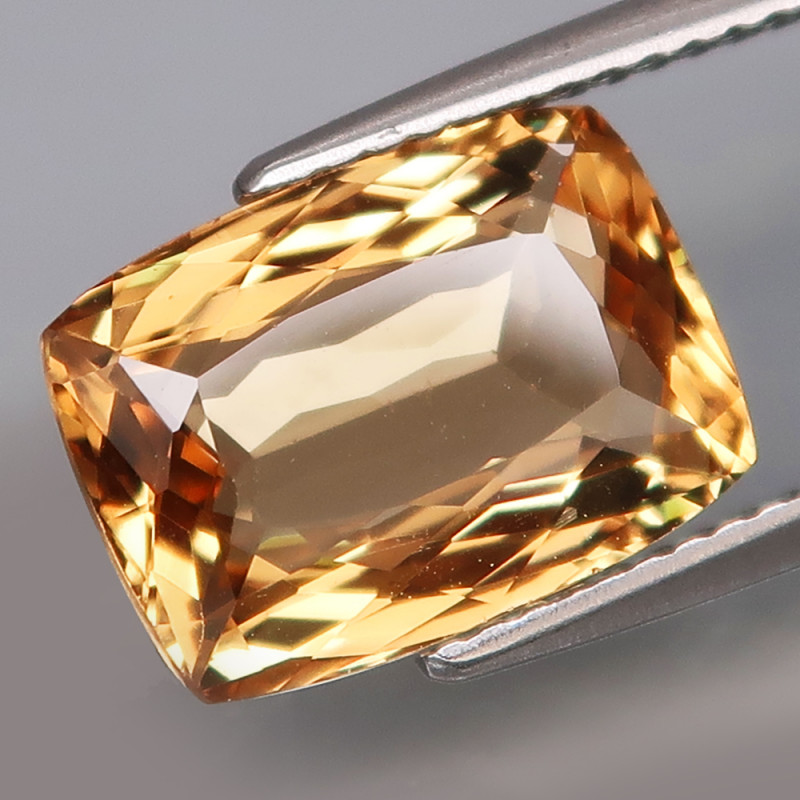
Ahosuo
Beryl abo kɔla ahorow no gu ahorow ma ɛyɛ nwonwa. Bere a beryl aboɔden abo a ɛho tew nni kɔla no, chromium ne dade nneɛma dannan no ma ɛbɛyɛ aboɔden abo a yenim na yɛdɔ no.
Emerald nya ne kɔla ahorow fi chromium ne vanadium mu. Nea ɛnte sɛ beryl abo a ɛyɛ ahabammono a wɔtaa de di dwuma no, ɛsɛ sɛ wɔde emerald hyɛ mu ma kɛse na ama afata sɛ ɛyɛ aboɔden abo.
Aquamarine aboɔden abo kɔla ahorow fi bruu a ɛyɛ hann so kosi bruu-ahabammono so, na ɛma nsu a ɛte sɛ nsu a ɛyɛ komm ba. Abo a ne kɔla yɛ hare no bo nyɛ den, bere a abo ahorow a ɛyɛ tuntum no bo yɛ den.
Na beryl kɔla kɔkɔɔ nso ɛ? Saa aboɔden abo a ɛyɛ hyew yi fi raspberry so kosi rose a emu dɔ so na wonya wɔn kɔla fi manganese kakraa bi mu.
Morganite kɔla gu ahorow fi blush pink so kosi salmon so, na aboɔden abo a ɛwɔ peach ne pink nne a emu da hɔ no na nkurɔfo ani gye ho kɛse! Hello, pink ayeforohyia ring abo!
Heliodor abo no fi kɔkɔɔ a ɛyɛ mmerɛw kosi sika kɔkɔɔ a emu dɔ, na ebi mpo da borɔdɔma ne ahabammono a ɛyɛ hyew adi.
Kɔla di dwuma titiriw ma beryl abo. Nanso nea emu da hɔ nso ɛ?
Ɛda adi pefee
Sɛ wohwɛ aboɔden abo bi mu a, ebia wubehu biribi a wɔfrɛ no inclusions. Eyinom yɛ mfutuma, nneɛma a asɛe, anaa aboɔden abo nketenkete a ɛkɔhyɛ aboɔden abo mu bere a ɛreyɛ no.
Sɛ yɛbɛka no ɔkwan biara so a, aboɔden abo a wɔmfa nka ho anaasɛ “ɛho tew aniwa” no wɔ mfaso kɛse. Nanso, ɛnyɛ bere nyinaa na ɛte saa!
Sɛ nhwɛso no, abɔde mu emerald taa wɔ nneɛma a wɔde ka ho a wotumi hu. Esiane sɛ emerald som bo kɛse nti, nneɛma a wɔde ka ho a ɛwɔ hɔ no remma ne bo so ntew. Saa ara na ɛte wɔ beryl kɔkɔɔ a ɛho yɛ na koraa na ɛsom bo no ho.
Nanso, beryl aboɔden abo afoforo te sɛ morganite ne goshenite wɔ bo a ɛba fam sɛ ɛda kɔla ne saturation-dulling inclusions adi a. Nea eye ne sɛ, mpɛn pii no, saa aboɔden abo yi yɛ nea aniwa ho tew dedaw.
Carat Mu duru
Carat mu duru ne C a etwa to a ɛsɛ sɛ wususuw ho bere a woretɔ aboɔden abo. Aboɔden abo dodow no ara mu duru nnu carat anum. Adɛn? Efisɛ dodow a aboɔden abo yɛ kɛse no, dodow no ara na ɛtaa nya bo — a aboɔden abo akɛse a wotumi hu a ɛka ho nka ho.
Beryl kɔkɔɔ ho yɛ na araa ma ɛntaa ntra carat abien, bere a morganites taa mu duru sua sen beryl aboɔden abo afoforo nso.
Nanso aquamarine ne heliodor de, ɛwɔ akɛse pii. Ɛno nti na ɛnyɛ nea abo a emu yɛ duru bo yɛ den kɛse no.
Mpɛn pii no, gosenite ne emerald mu duru yɛ karat biako kosi anum. Wɔ saa aboɔden abo yi so no, nneɛma a emu duru yɛ akɛse ma nneɛma bo kɔ soro.

Ayaresa
Beryl ayaresa yɛ akwan a ahobammɔ wom, abu so, na wogye tom kɛse a ɛma kɔla ne nea emu da hɔ yɛ kɛse. Mpɛn pii no, beryl abo a wɔayɛ ho adwuma no kɔla, emu da hɔ, ɛkyɛ, na ne bo yɛ den.
Enti, ayaresa ahorow bɛn na ɛwɔ hɔ?
Ɛkame ayɛ sɛ wɔde ɔhyew yɛ aquamarine aboɔden abo nyinaa de yi ɛnne biara a ɛyɛ ahabammono a efi ferric (dade) efĩ mu ba no fi hɔ. Wɔma aquamarines yɛ hyew digrii Fahrenheit 700-800 wɔ baabi a oxygen nni mu. Adeyɛ no dan ferric iron kakraa biara ma ɛdan ferrous iron, na ɛma aquamarine signature blue shades.
Na goshenite ayaresa nso ɛ?
Wobetumi adan goshenite ayɛ no heliodor denam mframa a wɔde bɔ so, a nea ɛka ho ne sɛ wɔde nnuru sesa ɔbo kɛse bi a ɛhwɛ ade no so. Te sɛ beryl ɔhyew ayaresa no, mframa a ano yɛ den yɛ adeyɛ a ahobammɔ wom na ɛtra hɔ daa a ɛde nsoromma mu hwɛ ba.
Yɛadi asase ho nsɛmfua pii ho dwuma. Nanso beryl ɔbo no abakɔsɛm nso ɛ? Momma yɛntu kwan nkɔ bere a atwam no mu nkɔhwɛ sɛ aboɔden abo a ɛyɛ hyew yi agyapade no reda adi!
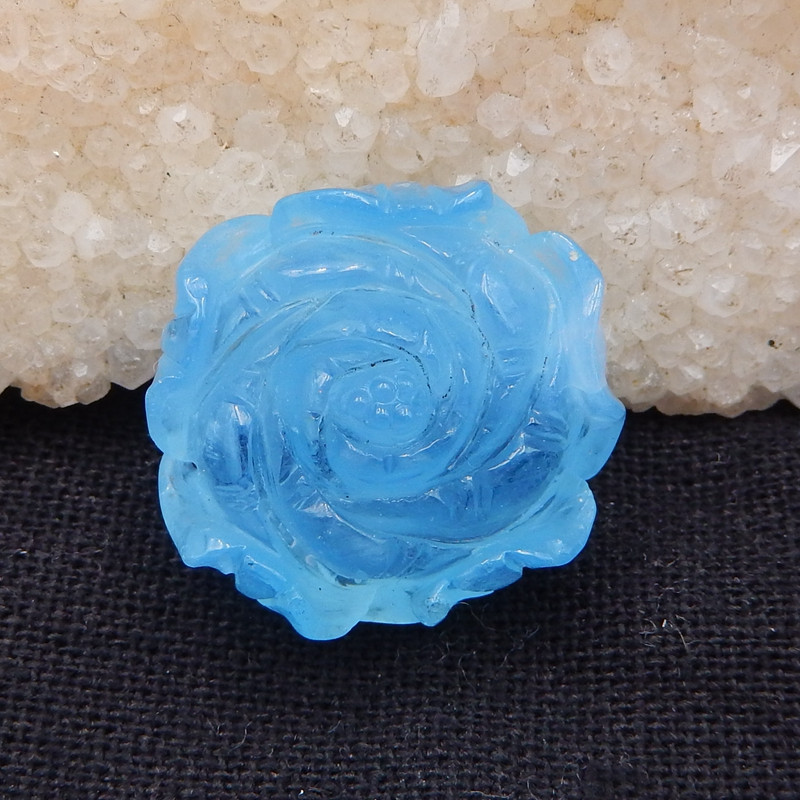
Beryl Abakɔsɛm
Beryl fi Hela asɛmfua beryllos , a ɛkyerɛ “ɛpo mu nsu kɔla a ɛsom bo a ɛyɛ bruu-ahabammono.”
Edin a ɛyɛ nwonwa saa no de abakɔsɛm a ɛyɛ nwonwa saa ara ba. Wɔ tete Hela no, na wɔde beryl yɛ ɔbo a wɔde sa asaabo ne akisikuru. Ná Helafo de beryl bɛhyɛ nsu a ɛho tew mu ansa na wɔanom.
Sɛnea ebia wunim no, na emerald agye din wɔ wiase nyinaa. Ná Cleopatra agye din wɔ ne emerald a ɔboaboaa ano pii no ho. Ná tete amanfo gye di sɛ emerald bɔ ahotew ho ban, ɛhyɛ nokwaredi ho nkuran, na ɛhyɛ nkɔmhyɛ ho nkuran. Ebia ɛyɛ emerald na ɛmaa Cleopatra nyaa anuonyam ne ahotoso!
Saa bere no nyinaa, na po so akwantufo hyɛ aquamarines sɛ agyan a wɔde bɔ wɔn ho ban. Sɛnea Helafo anansesɛm kyerɛ no, ɛpo mu nyame Poseidon na ɔde po mu nsu bɔɔ aquamarine!
Mfe mpempem pii akyi, wɔ afeha a ɛto so 13 Europa no, aniwa ahwehwɛ a edi kan a wɔyɛe pɛn no de beryl ahwehwɛ a wɔde di dwuma. Saa bere no, na wontumi mma ahwehwɛ mu nna hɔ sɛnea ɛsɛ, enti beryl tuu anammɔn de boaa nkurɔfo ma wohuu ade yiye!
Seesei a yɛahwehwɛ beryl ɔbo no bere a atwam a ɛyɛ fɛ no mu no, momma yɛnkɔ ne mfiase ne ne fibea mu.
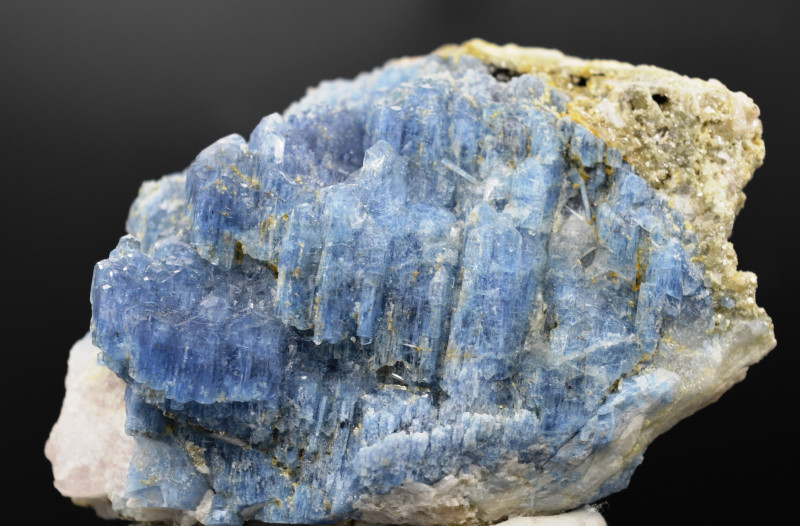
Beryl Abo Mfiase ne Ne Fibea
Ɛhe na beryl fi, ɔkwan biara so? Saa aboɔden abo yi dodow no ara yɛ granite pegmatites – ogya abotan a ahwehwɛ akɛse wom.
Mfiase afoforo bi ne Colombia abo a wɔfrɛ no limestone ne tin ne tungsten abo a wɔde yɛ nneɛma. Wɔ Russia Ural Mmepɔw no so no, beryl abo yɛ mica schists – metamorphic abotan a wɔde aboɔden abo pii ayɛ.
Beryl a wotu wɔ wiase nyinaa wɔ mmeae te sɛ U.S., Canada, Mexico, Russia, Afrika, ne Burma.
Emerald fi Colombia, Brazil, ne Zambia titiriw. Bere a Colombia hoahoa ne ho sɛ ɛwɔ emerald a eye sen biara a atwa ho ahyia no, Brazil emerald yɛ tuntum na ɛwɔ nneɛma pii a wɔde ka ho, na Zambia emerald wɔ bruu-akuturuku.
Ɛnyɛ emerald nkutoo ne beryl aboɔden abo a wɔyɛ wɔ Brazil. Sɛnea ɛte no, Brazil yɛ ɔman a edi kan a ɛde aquamarines ma!
Wɔ Amerika Atifi fam atifi no, Utah Wah Wah Mmepɔw so na beryl kɔkɔɔ a ɛwɔ hɔ nkutoo na ɛwɔ hɔ. Gyae ma saa Atɔe Fam mmepɔw a ɛso yɛ toro no ma ɛnyɛ nea ɛho yɛ na na ɛyɛ nwonwa saa!
Seesei a yɛde beryl ayaresa ahoɔden ama yɛn ho aduan no, momma yɛnhwɛ aboɔden abo a wɔhwɛ so ne ne siesie.
Beryl Hwɛ ne Nsiesiei
Beryl aboɔden abo a wobɛhwɛ so no yɛ mmerɛw na ɛnyɛ den! Sɛ woyɛ nneɛma a edidi so yi a, w’agude no bɛkɔ so ayɛ nea mfomso biara nni ho te sɛ da a wotɔɔ no no ara pɛ.
Nea edi kan no, kwati sɛ wobɛtwetwe w’aboɔden abo no. Hwɛ hu sɛ wobɛto owia hann a wobɛkɔ so no ano hye na ama wo bo no kɔla a ɛyɛ hyew no akora so yiye.
Kwati mfiri a wɔde tew nneɛma ho na amma nkekae ankɔ so.
Mmom no, ma w’agude no nhyerɛn na ɛho tew denam nnuru a ɛnyɛ den a wode hohoro nneɛma ne nsu a ɛyɛ hyew a wode bɛhohoro so no so.
Ɛno akyi no, fa ntama a ɛyɛ mmerɛw bɔ wɔn brɛoo ma wɔnyow.
Na ɛno ara ne no! Wo agude a wobɛma ayɛ foforo na ɛhyerɛn no yɛ super mmerɛw na wobetumi de ahyɛ wo ntadehyɛ nhyehyɛe mu ntɛmntɛm.
Ebedu saa bere yi no, ebia woresusuw ho sɛ, “So beryl yɛ ɔbo a ɛsom bo?” na sɛ ɛte saa a: “Ɛho ka yɛ ahe?”
Yɛn ani agye sɛ wobisae! Afei momma yɛnhwehwɛ beryl bo mu.

Beryl Abo Bo ne Ne Bo
Mfaso bɛn na ɛwɔ beryl so? Esiane sɛ nneɛma ahorow pii wɔ hɔ nti, ne bo betumi ayɛ te sɛ nea ɛboro so. Ɛnsɛ sɛ yɛhaw yɛn ho, yɛbɛbom abubu wɔn!
Emerald a wɔfrɛ no Emerald
Bere a emerald agye din sɛ ne bo yɛ den no, ɛsono ne bo kɛse a egyina aboɔden abo su so. Emerald abo a wɔde di gua no fi $30-250 wɔ carat biara mu, bere a emerald a ɛwɔ soro no bo yɛ $2.9k-9.8k wɔ carat biara mu.
Nsu mu nsu mu aduru
Aquamarines wɔ bo ahorow ahorow nso. Aquamarine abo a ɛyɛ aboɔden abo a ɛyɛ fɛ no fi $5-100 wɔ carat biara mu, bere a ne bo a ɛyɛ fɛ kɔ soro kodu $675 wɔ carat biara mu.
Beryl kɔkɔɔ
Wɔ ne nuanom mmarima nyinaa mu no, beryl abo kɔkɔɔ a wɔntaa nhu na ɛhyɛ bo a ɛkorɔn sen biara. Saa aboɔden aboɔ a ɛfiri baabi baako yi tumi boɔ bɛyɛ $10k wɔ carat biara mu.
Morganite na ɔkyerɛwee
Sɛ emerald, aquamarines, ne beryl kɔkɔɔ bo nyɛ den a, mma ɛnhaw wo! Morganite bo betumi ayɛ soronko kɛse fi $85-450 wɔ carat biara mu.
Gosenite ne Heliodor
Wɔ wɔn a wɔrehwehwɛ abo a ne bo yɛ den fam no, monkyia goshenite ne heliodor! Bere a ɛsono nneɛma bo no, goshenite ne heliodor abo bo yɛ dɔla 1-100 wɔ carat biara ho.
Sɛnea wubetumi ahu no, beryl abo bo sakra gyina ahorow ahorow ne ne su so. Esiane sɛ nneɛma pii wɔ hɔ a wubetumi apaw nti, wubehu aboɔden abo a ɛhyɛ nnaka no nyinaa mu ma wo su ne wo sikasɛm nhyehyɛe!

Woretɔ nneɛma a wɔde bɛtɔ Beryl Stones?
Na ɛno de yɛn ba yɛn beryl akwankyerɛ no awiei! Sɛnea yɛasua no, beryl nyɛ aboɔden abo foforo kɛkɛ. Bere a wontumi nnye ho kyim sɛ ɛyɛ ɔdɔ no, beryl su ahorow a ɛyɛ nwonwa no fi ne akyi a ɛyɛ anigye ne ne su ahorow. Beryl ɔbo bi wɔ hɔ ma obiara!
Sɛ́ ebia emerald ayɛ wo nwonwa anaasɛ w’ani agye goshenite bi a ɛhyerɛn no, wubehu beryl ɔbo bi ama adeyɛ biara. Saa aboɔden abo a ɛfa biribiara ho yi betumi ato nsa afrɛ ayaresa, ahobammɔ, ne ahoɔfɛ aba w’asetra mu. Nea eye sen biara no, wiase no mu yɛ hyew kakra bere nyinaa a beryl wɔ wo nkyɛn!
So worehwehwɛ aboɔden abo a ɛyɛ nwonwa? Hwehwɛ yɛn beryl sotɔɔ no mu nnɛ!
搜尋Gemstone Encyclopedia
相關拍賣
相關文章
Obiara wɔ aboɔden abo a ɛne ne nsoromma agyiraehyɛde hyia. Wɔsan frɛ eyinom sɛ wo Nsoromma Abo. Sua pii fa saa abo yi ho na hwehwɛ nea wo Nsoromma Abo no yɛ.
10th May 2018
Mfiase no na wɔde Awo Abo anaa aboɔden abo no bata nsoromma mu hwɛ anaa ɔsram a ankorankoro bi awo ho. Hwehwɛ nea wo bo no yɛ na hwɛ abo a yɛwɔ sɛ yɛtɔn no
8th Feb 2021
Nnwinnade pii wɔ gua so a wɔde sɔ ɔbo a ɛsom bo hwɛ, nanso dɛn ne nnwinnade atitiriw a wɔhwehwɛ ma nhwehwɛmu a ɛnyɛ den. Momma yɛnhwɛ nnwinnade anan a wɔde sɔ aboɔden abo hwɛ.
4th Mar 2020
最新的文章
Nnua a wɔde asonse a wɔasen a wɔsan frɛ no nhabannuru asonse no yɛ abɔde mu ade a wɔde si asono asonse ananmu, na wotwa fi Amerika Kesee Fam phytelephas nnuadewa mu nnuadewa mu wɔ abrabɔ pa mu. Sua mmɛw asonse ho ade nyinaa wɔ akwankyerɛ yi mu!
15th Jan 2026
Chrysanthemum nhwiren abo yɛ abɔde mu anwonwade a ɛwɔ calcite, celestite, anaa andalusite nhwiren fitaa bi a wɔde asisi limestone tuntum anaa atɛkyɛ abo so.
13th Jan 2026
Rainbow lattice sunstone yɛ feldspar ahorow a ɛwɔ optical nsunsuanso abiɛsa fɛfɛ a efi nneɛma ahorow a wɔde ka ho a ɛwɔ hɔ no mu ba. Ɛyɛ ogya kɔla display ne lattice nsusuwso ma ɛyɛ coletor abohene a wɔntaa nhu!
12th Jan 2026
文章類別
How To's is where you will find helpful articles from gem Rock Auctions on how to cut gemstones, select gemstones and buy gemstones.
9文章


![VS CERTIFIED INTENSE GOLDEN BERYL-HELIODORE [BRY11]](https://liveplatforms-production.b-cdn.net/tenants/gr/uploads/images/350000-354999/353836/353836_1364949576.jpg?width=480&aspect_ratio=1001%3A1000)


